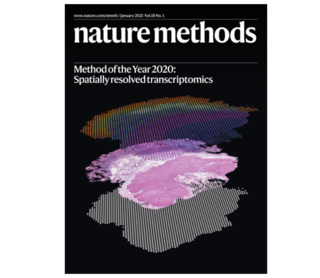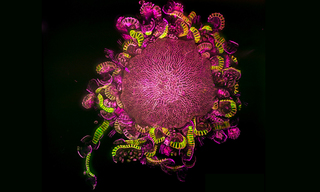Nature Methods journal recently selected spatially resolved transcriptomics as Method of the Year for 2020. Spatially resolved transcriptomics is a collective term for a set of techniques directed towards a single goal – molecular level characterization of single cells within the spatial context of the tissues that they inhabit. This
maintenance of spatial context is crucial for understanding key aspects of cell biology, developmental biology, neurobiology and tumor biology. MERFISH (multiplex error robust fluorescence in situ hybridization) is one of the most prominent spatially resolved transcriptomics techniques. MERFISH is an advanced imaging technique that profiles cell populations based on identification of thousands of RNA transcripts per cell. The CELESTA Light Engine is an ideal and widely-adopted illumination source for this application. In a recent paper published in Cell [1], Xiaowei Zhuang and co-workers at Harvard University used MERFISH and a CELESTA Light Engine to simultaneously image more than 1000 genomic loci with nascent RNA transcripts of more than 1000 genes residing in these loci and landmark nuclear structures, including nuclear speckles and nucleoli. This approach allows exploration of the relationship between chromatin organization, transcriptional activity, and nuclear structures in single cells. The paper also provides detailed descriptions of the procedures for performing the multiple cycles of probe hybridization and imaging required for multiplexed detection of thousands of DNA and RNA sequences.




